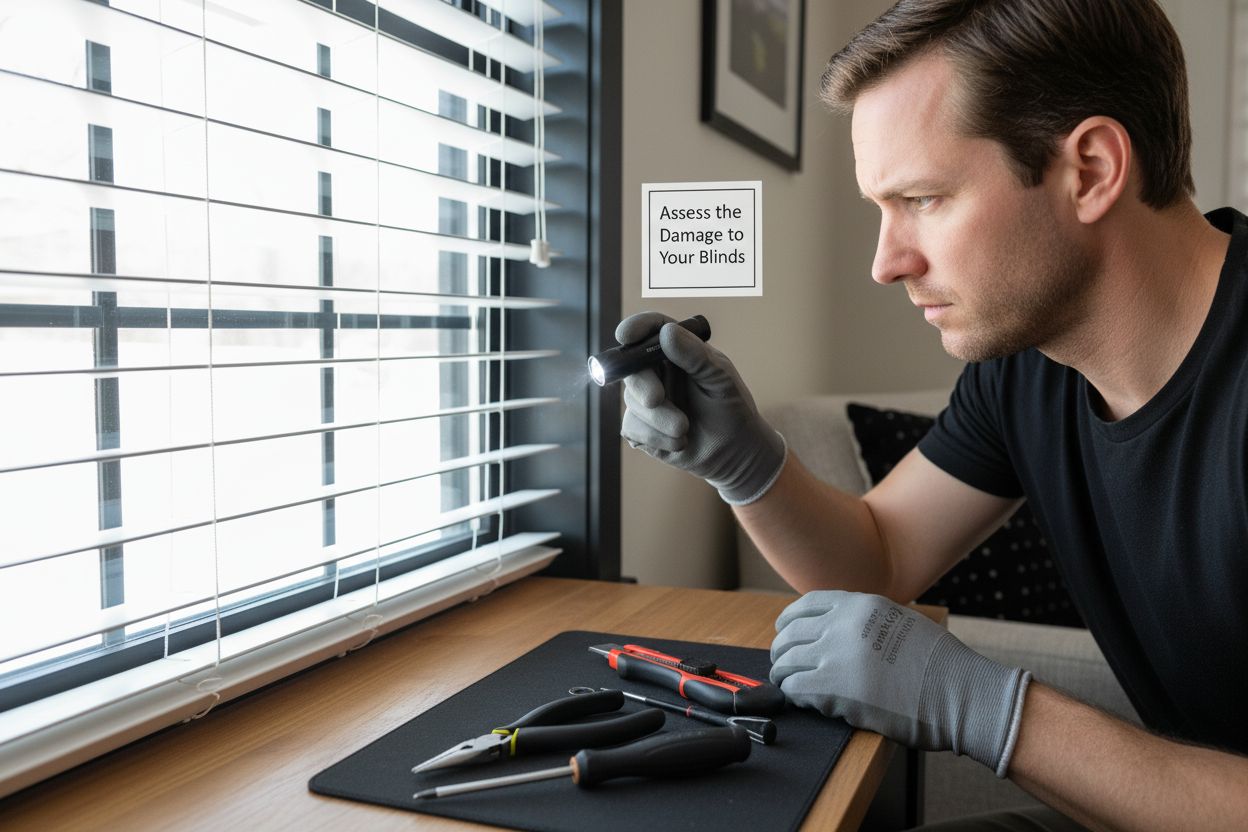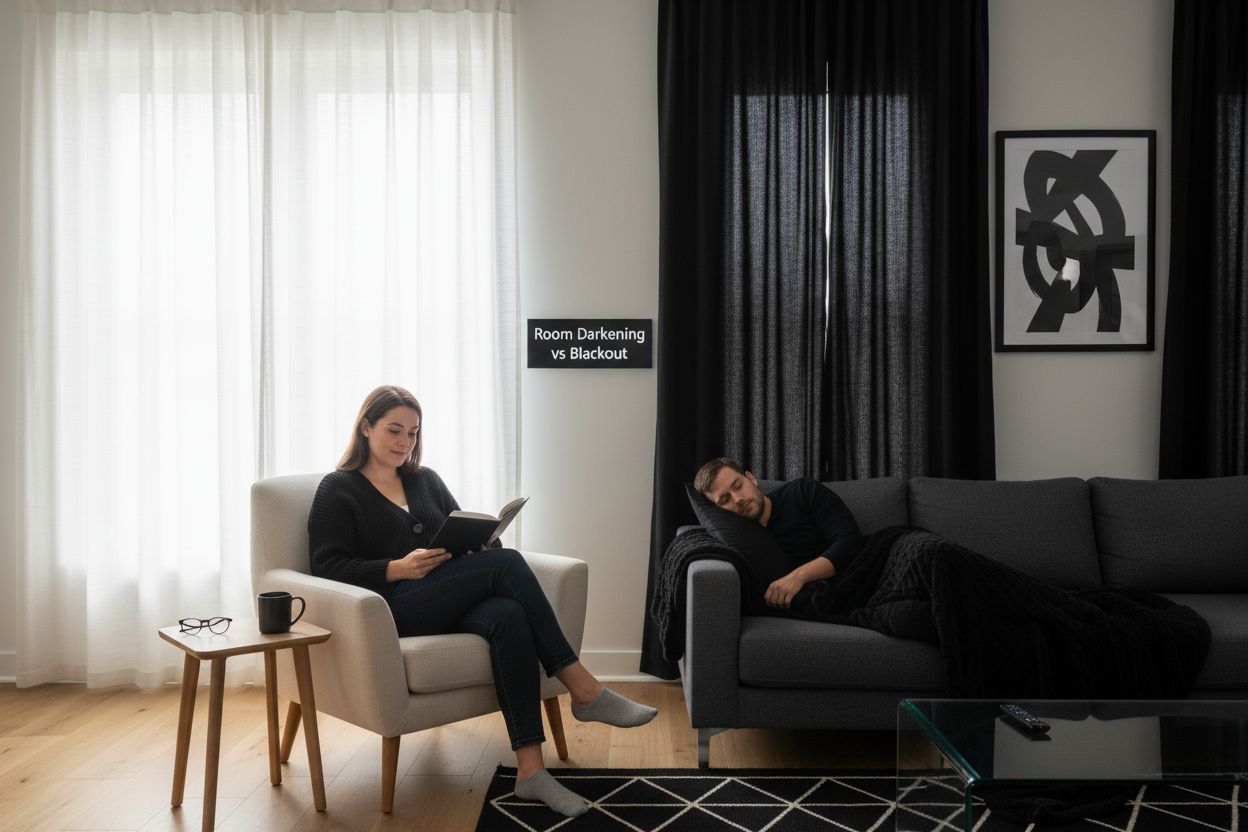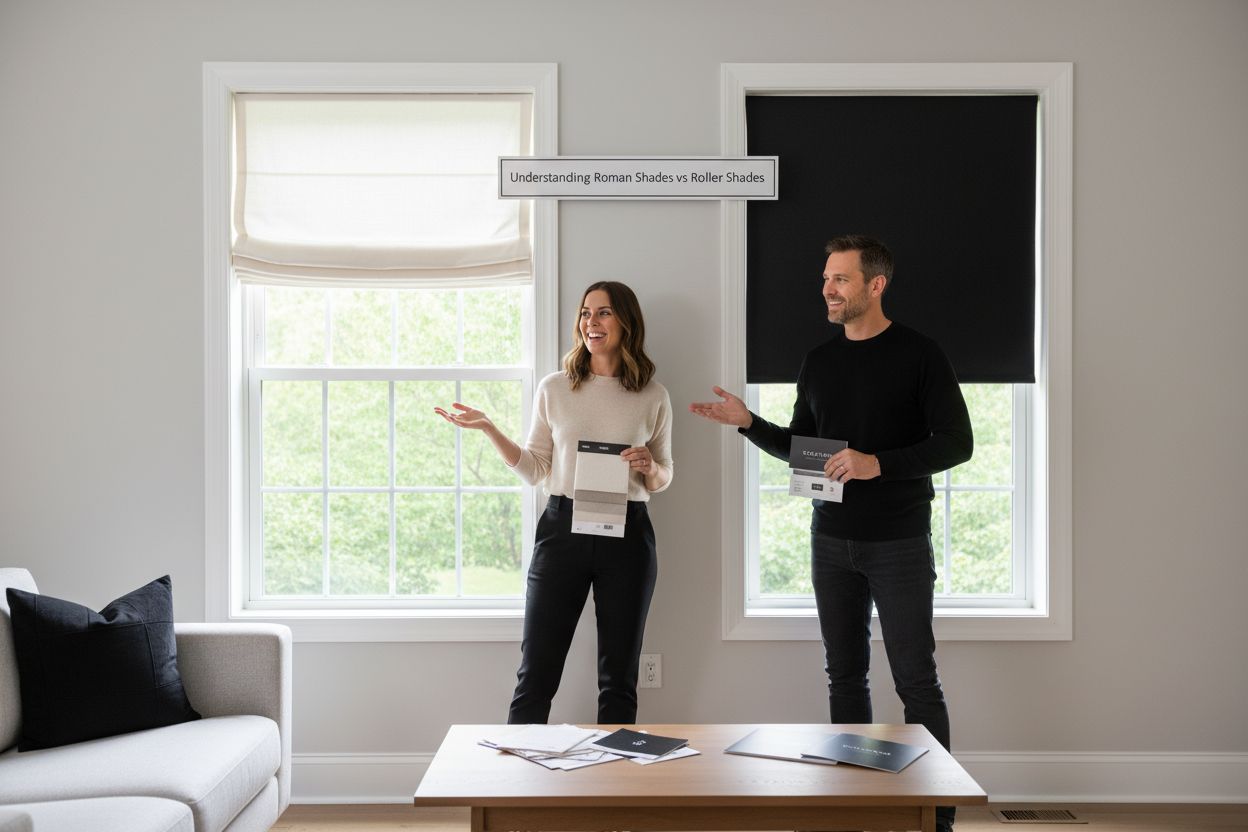
Understanding Roman Shades vs Roller Shades for Your Home
Choosing window shades might sound simple. After all, you are just picking a way to block the sun and keep your space private. But the decision between roman shades and roller shades is packed with personality and purpose. Here is something most people miss: roman shades can offer better thermal insulation, making them not just a style choice, but a smart one for comfort and energy savings.
Table of Contents
- What Are Roman Shades And Roller Shades?
- Why Choose Roman Shades Or Roller Shades?
- How Do Roman Shades And Roller Shades Work?
- Key Differences Between Roman Shades And Roller Shades
- Practical Applications Of Roman And Roller Shades In Design
Quick Summary
| Takeaway | Explanation |
|---|---|
| Choose based on design preference | Roman shades add warmth and texture, while roller shades provide a sleek and modern look. |
| Evaluate functionality and performance | Consider light control, energy efficiency, and maintenance needs when selecting shades. |
| Consider room-specific applications | Roman shades work well in living areas, whereas roller shades suit minimalist spaces like offices. |
| Assess fabric types and opacity | Different materials impact aesthetics and functionality, ensuring the right shade fits your needs. |
| Understand operational mechanics | Roman shades use complex folding systems, while roller shades rely on simple rolling systems for ease of use. |
What Are Roman Shades and Roller Shades?
Window treatments play a critical role in transforming interior spaces, and roman shades vs roller shades represent two distinctly different approaches to controlling light, privacy, and aesthetic design. Both options offer unique characteristics that cater to different home design preferences and functional requirements.
Understanding Roman Shades
Roman shades are fabric window coverings that create elegant, soft folds when raised and provide a smooth, flat surface when lowered. These sophisticated window treatments are crafted from various materials including cotton, linen, silk, and synthetic blends. Learn more about window treatment styles reveals that roman shades offer exceptional design versatility.
Key characteristics of roman shades include:
- Soft, cascading fabric panels that create visual depth
- Available in multiple fold styles like flat, hobbled, and relaxed
- Can be manufactured with room darkening or light filtering fabrics
- Excellent for adding texture and warmth to interior spaces
Exploring Roller Shades
Roller shades represent a more minimalist and contemporary window covering solution. These window treatments feature a single piece of fabric that smoothly rolls up or down using a spring mechanism or motorized system. According to architectural design research, roller shades are prized for their clean lines and streamlined appearance.
Distinctive features of roller shades include:
- Sleek, uniform appearance with minimal visual complexity
- Typically made from synthetic materials like polyester or fiberglass
- Available in wide range of opacity levels from sheer to blackout
- Perfect for modern, minimalist interior design schemes
Both roman and roller shades offer homeowners flexible solutions for managing natural light, enhancing privacy, and complementing interior design aesthetics. The choice between these window treatments ultimately depends on personal style, functional requirements, and the specific architectural characteristics of individual living spaces.
The table below compares the main features and characteristics of roman shades and roller shades to help you evaluate which suits your home best.
| Feature / Characteristic | Roman Shades | Roller Shades |
|---|---|---|
| Appearance | Soft fabric folds with visual depth | Flat, sleek, and uniform look |
| Material Options | Cotton, linen, silk, synthetic blends | Synthetic (polyester, fiberglass) |
| Operation Mechanism | Folding panel system with lifting cords / motor | Rolling fabric on a cylinder (manual/motorized) |
| Light Control Options | Light filtering to room darkening | Sheer to blackout |
| Best Suited For | Traditional or transitional, cozy spaces | Modern or minimalist interiors |
| Thermal Insulation | Superior (better energy efficiency) | Moderate |
| Cleaning / Maintenance | Requires more care due to fabric folds | Easy to clean and maintain |
Why Choose Roman Shades or Roller Shades?
Selecting the right window treatment involves understanding the unique benefits and design considerations of roman shades vs roller shades. Homeowners must evaluate aesthetic preferences, functional requirements, and interior design goals when making this important decision.
Design and Aesthetic Impact
Window treatments serve as more than just light control mechanisms they are integral design elements that significantly influence a room’s overall atmosphere. Our comprehensive guide to window treatments helps homeowners understand how different styles transform living spaces.
Key aesthetic considerations include:
- Roman shades provide soft, elegant texture and visual warmth
- Roller shades offer clean, modern lines with minimal visual interference
- Fabric choices dramatically impact room ambiance and design cohesion
- Color and material selection can complement or contrast existing decor
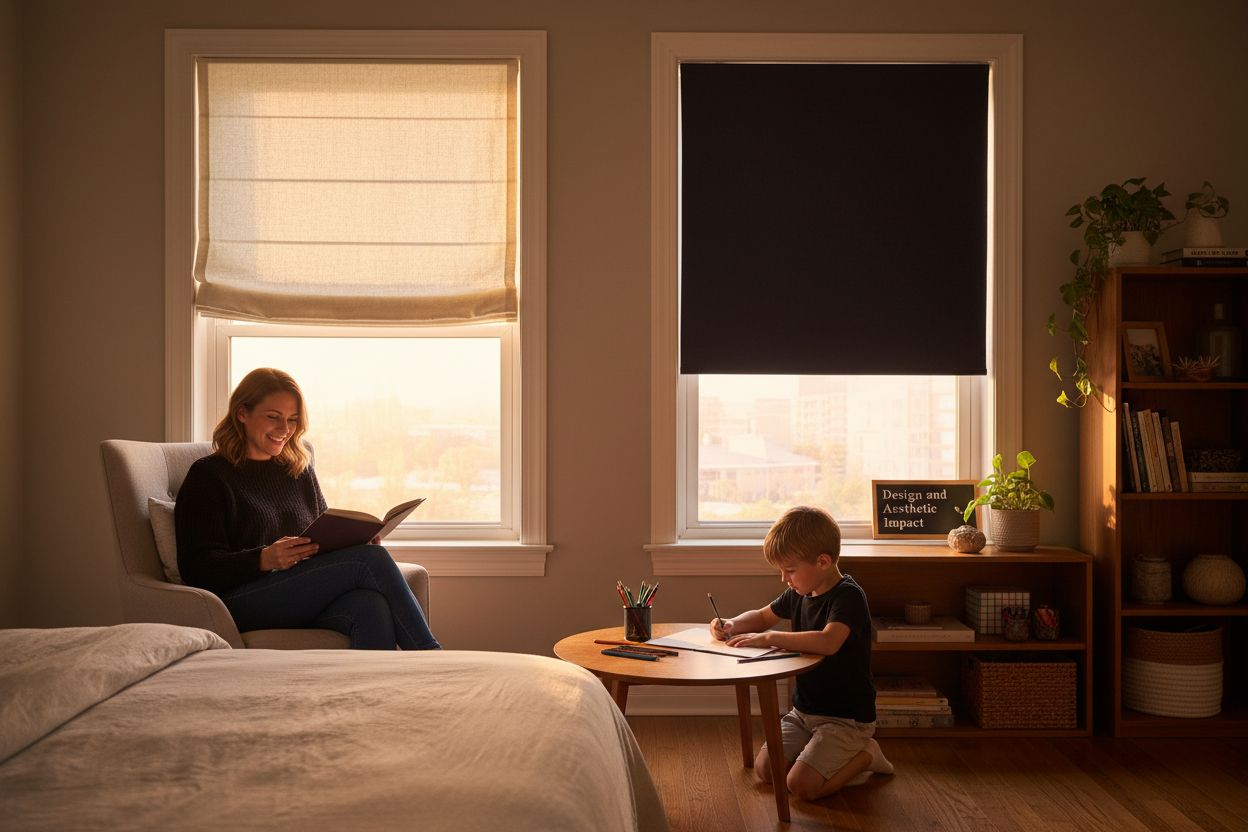
Practical Performance Factors
Beyond visual appeal, window treatments must perform critical functional roles. According to architectural design research, different shade styles excel in specific environmental conditions.
Important performance metrics include:
- Light filtering and room darkening capabilities
- Energy efficiency and thermal insulation properties
- Ease of maintenance and cleaning requirements
- Durability and long term performance under regular use
Roman shades typically suit traditional or transitional interiors seeking soft sophistication, while roller shades perfectly complement contemporary minimalist spaces. The ultimate selection depends on balancing personal style, functional needs, and the unique architectural character of individual rooms. Homeowners should consider fabric weight, opacity, color palette, and mechanical operation when making their final decision.
How Do Roman Shades and Roller Shades Work?
Understanding the mechanical principles behind roman shades and roller shades reveals the engineering ingenuity that enables precise light control and smooth operational functionality. Each window treatment employs unique mechanisms to provide homeowners with flexible, user friendly solutions.
Roman Shade Mechanism
Roman shades operate through an intricate system of horizontal fabric panels connected by vertical support cords. Our detailed guide to window treatment mechanics explains the sophisticated engineering behind these elegant window coverings.
Key operational characteristics include:
- Vertical lifting cords running through strategically placed rings
- Fabric panels that fold uniformly when raised
- Tension mechanisms ensuring smooth and consistent movement
- Manual cord or optional motorized lifting systems
Roller Shade Functionality
Roller shades represent a more streamlined mechanical approach to window covering technology. These window treatments utilize a simple yet effective rolling mechanism mounted inside a compact headrail. According to architectural design research, roller shade mechanisms prioritize simplicity and reliability.
Primary operational features encompass:
- Spring loaded or motorized rolling cylinder
- Single piece of fabric that smoothly retracts upward
- Precise tension control for consistent positioning
- Bottom rail weight ensuring flat fabric deployment
Both roman and roller shades incorporate sophisticated design principles that transform basic fabric into intelligent, responsive window treatments. The choice between these systems depends on personal preference, interior design aesthetic, and specific functional requirements of individual living spaces.
Key Differences Between Roman Shades and Roller Shades
While roman shades and roller shades both serve the fundamental purpose of light control and privacy, they differ significantly in design, functionality, and aesthetic appeal. Understanding these nuanced distinctions helps homeowners make informed window treatment selections.
![]()
Structural and Design Variations
Our comprehensive guide to window shade differences highlights the essential architectural contrasts between these window coverings. Roman shades feature soft, cascading fabric panels that create dimensional texture, while roller shades present a sleek, uniform surface.
Key structural differences include:
- Roman shades create visual depth through folded fabric panels
- Roller shades maintain a flat, streamlined profile
- Fabric complexity varies dramatically between the two styles
- Mounting options differ based on shade type and window architecture
Performance and Functionality Distinctions
Beyond aesthetic considerations, roman and roller shades demonstrate unique performance characteristics. According to architectural design research, each shade type excels in specific environmental conditions and practical applications.
Critical performance variations encompass:
This table outlines the key performance and functionality distinctions between roman shades and roller shades as discussed in the article.
| Aspect | Roman Shades | Roller Shades |
|---|---|---|
| Thermal Insulation | Typically better | More limited |
| Light Filtering Precision | Good, can be customized | Excellent, wide range available |
| Maintenance | More complex, gentle cleaning needed | Easier, wipe down regularly |
| User Experience | Manual or motorized operation | Smooth, simple operation |
| Durability | High with proper care | High, typically less maintenance |
- Roman shades typically provide superior thermal insulation
- Roller shades offer more precise light filtering capabilities
- Maintenance requirements differ based on fabric complexity
- Operational mechanisms present distinct user experiences
The ultimate selection between roman and roller shades depends on balancing aesthetic preferences, functional requirements, and the specific architectural character of individual living spaces. Homeowners should carefully evaluate fabric weight, opacity, color palette, and mechanical operation to determine the most suitable window treatment for their unique environment.
Practical Applications of Roman and Roller Shades in Design
Window treatments transcend mere functionality, emerging as critical design elements that shape interior aesthetics and environmental comfort. Roman and roller shades offer distinct design solutions that can dramatically transform living spaces across various architectural styles and personal preferences.
Room Specific Design Strategies
The Ultimate Guide to Window Shade Selection illuminates how different shade styles complement specific interior environments. Each room presents unique design challenges that can be elegantly addressed through thoughtful window treatment choices.
Room specific applications include:
- Living rooms benefit from roman shades creating soft, elegant textures
- Minimalist home offices excel with clean roller shade profiles
- Bedrooms require precise light control and privacy management
- Contemporary spaces demand streamlined visual solutions
Environmental and Functional Considerations
Beyond aesthetic appeal, window treatments play a crucial role in managing environmental conditions. According to architectural design research, selecting the right shade involves understanding complex interactions between light, temperature, and spatial dynamics.
Key functional design considerations encompass:
- Energy efficiency through precise light and heat management
- Acoustic properties affecting room sound qualities
- UV protection for furniture and interior surfaces
- Psychological impact of natural light modulation
The art of selecting window treatments involves balancing visual harmony, functional performance, and individual lifestyle needs. Roman and roller shades represent sophisticated design tools that enable homeowners to craft personalized environments reflecting both aesthetic preferences and practical requirements.
Transform Your Windows with the Perfect Custom Shade
Choosing between roman shades and roller shades can feel overwhelming. You want a window treatment that complements your home’s style, fits your functional needs, and enhances comfort in every room. This article explored the unique textures, design possibilities, and privacy options these shades offer, helping you identify what matters most for your space. Now, you can take the next step and bring these concepts to life in your own home.
Discover our New Arrivals to see the latest styles and features that blend seamlessly with both traditional and modern interiors. All our collections deliver energy efficiency, easy operation, and beautiful results—so you never have to compromise style for function.
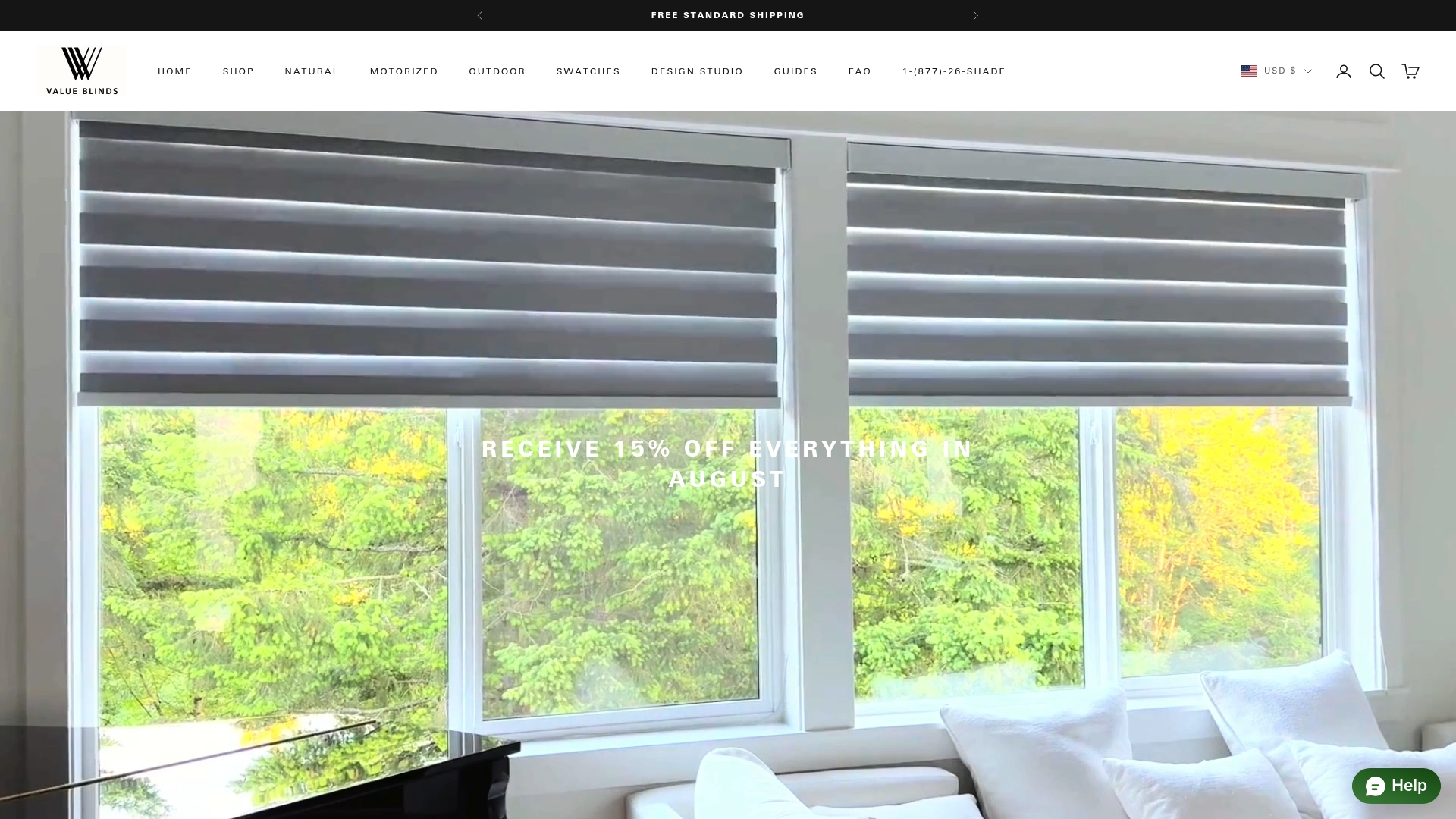
Ready to see your window transformation in action? Explore Trending Features and experience the difference that premium, customizable window shades can make. Visit Value Blinds Direct to order free swatches, use our design tools, and make your custom selection today. Enhance your home’s comfort and curb appeal now with expert support every step of the way.
Frequently Asked Questions
What are the main differences between roman shades and roller shades?
Roman shades feature soft, cascading fabric that creates depth, while roller shades have a flat, streamlined appearance. To determine which suits your space, consider your interior style and the level of visual complexity you desire.
How do I choose the right type of shade for my living room?
For a living room, consider roman shades if you want soft texture and elegance. Alternatively, opt for roller shades for a clean, modern look; assess your room’s existing decor and choose accordingly.
Can roman shades help with energy efficiency in my home?
Yes, roman shades typically provide better thermal insulation compared to roller shades. To maximize energy efficiency, select room-darkening fabrics, which can help maintain a comfortable temperature year-round.
How do maintenance requirements differ between roman shades and roller shades?
Roman shades generally require more care due to their fabric complexity and folds. To maintain them, regularly dust and gently clean with appropriate fabric cleaners; roller shades are often easier to wipe down regularly.
What factors should I consider for light control when choosing between these shades?
Consider the opacity and fabric types offered by each shade style: roman shades can offer light-filtering to room-darkening options, while roller shades vary from sheer to blackout. Assess how much natural light you’re comfortable having in each room to make the best choice.
How do I measure my windows for roman shades or roller shades?
To measure for the right fit, take precise measurements of your window width and height, accounting for any mounting preferences. Use a tape measure and ensure accuracy to avoid possible fitting issues during installation.


